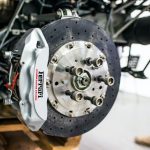Anti-lock Brake Systems: The Rule, Not the Exception
Anti-lock braking systems (ABS) in vehicles, including motorcycles and aircraft, haven’t just become more popular, they’ve become the standard in vehicle safety. Since the 90s, it has become a baseline feature in cars instead of a premium one. The vast majority of tests confirm that ABS technology minimizes the risk of accident and reduces accident-related casualties
Anti-lock Brake Systems
What & How of ABS
The components of the typical ABS includes:- Sensors that monitor wheel rotation speed
- Valves that allow, block, and release brake pressure
- Pumps filled with hydraulic fluid
- Controllers that signal action

